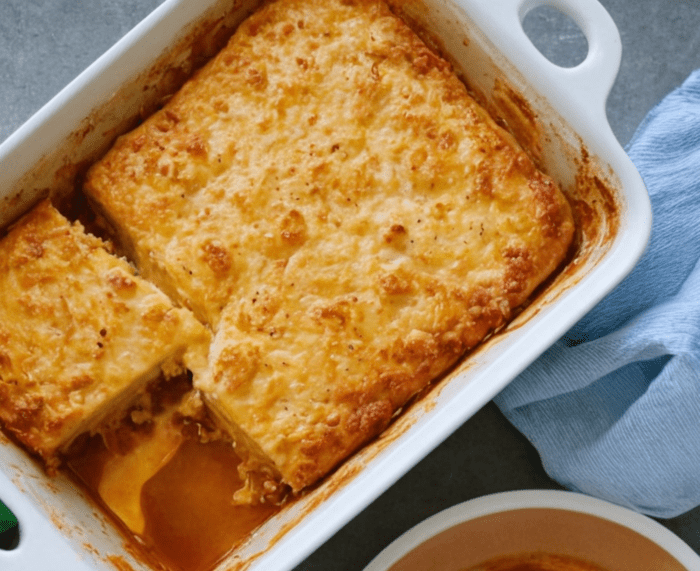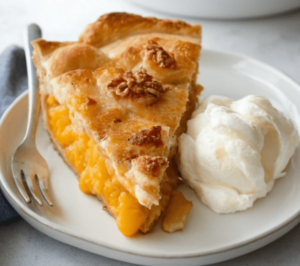Cobbler and pie are two quintessential desserts that have been a staple in homes and bakeries for centuries. Both desserts share a common foundation: a delicious, often fruit-filled base baked to perfection. However, despite their similarities, cobbler and pie are fundamentally different in both preparation and taste, leading to frequent confusion—especially regarding their dough. Many people wonder whether cobbler dough is the same as pie crust, but these two components differ significantly in ingredients, preparation methods, texture, and the role they play in the dessert. This article aims to clarify the distinctions between cobbler dough and pie crust, providing a detailed exploration of their characteristics, uses, and the unique qualities that make each dessert special.
Understanding Pie Crust
What is a Pie?
A pie is a versatile and beloved dessert featuring a pastry crust and a flavorful filling. Typically, a pie has a bottom crust that serves as a base for various sweet or savory fillings. Pies come in different forms, including single-crust pies with only a bottom crust, double-crust pies with both a bottom and top crust, and lattice pies with a woven top crust. The type of crust and filling can vary widely, resulting in endless variations—from classic apple pies to rich, savory meat pies. Pies’ universal appeal lies in their ability to be adapted to suit virtually any taste or occasion.
Characteristics of Pie Crust
Pie crust is a crucial element that shapes both the structure and flavor of a pie. The classic pie crust is made with simple ingredients: flour, butter (or shortening), and water. The process involves cutting cold butter into the flour, which creates small pockets of fat that melt during baking, resulting in the crust’s signature flaky texture. Water is then added sparingly to bring the dough together without making it too wet. The dough is rolled out and fitted into a pie dish, then blind baked to ensure it stays crisp—especially important for pies like pecan pie, where the filling is rich and sweet. A well-made pie crust should be rich, buttery, and slightly savory, offering a tender yet sturdy base that complements the pie’s filling.
- Ingredients: Flour, butter (or shortening), water.
- Process: Cut butter into flour, add water, roll out dough.
- Key Technique: Blind baking for crispness.
- Final Texture: Flaky, tender, and sturdy.
Understanding Cobbler Dough
What is a Cobbler?
A cobbler is a rustic dessert that typically features a fruit filling topped with biscuit-like dough or cake batter. Unlike pies, cobblers do not have a bottom crust. Instead, the fruit filling is placed directly in the baking dish, and the dough is spooned or dropped on top before baking. As the cobbler bakes, the dough rises slightly and develops a golden, craggy appearance. Cobblers come in several variations, including biscuit-topped cobblers with a dough resembling traditional biscuits and cake-topped cobblers with a dough that becomes fluffy and moist during baking. Cobblers are known for their homey, comforting nature and are often enjoyed warm, sometimes with a scoop of ice cream on the side.
Characteristics of Cobbler Dough
Cobbler dough is distinct from pie crust in both its ingredients and texture. The dough typically consists of flour, sugar, butter, and a liquid such as milk or cream. Unlike pie crust, which is rolled out, cobbler dough is mixed until just combined and then dropped or spread over the fruit filling. This process results in a soft, slightly sticky dough with a texture that becomes tender and biscuit-like after baking. As the butter in the dough melts, it creates pockets of richness that complement the sweetness of the fruit. The sugar adds a hint of sweetness and helps the dough brown, while the liquid ensures the dough remains moist and tender.
Cobbler dough has a less structured texture than pie crust. Rather than being flaky, cobbler dough is crumbly and soft, with a rustic, uneven surface that contrasts beautifully with the smooth, juicy fruit filling beneath. This difference in texture is one of the key distinctions between cobblers and pies, giving each dessert its unique character and appeal.
Key Differences Between Cobbler Dough and Pie Crust
Placement of Dough
The placement of the dough is one of the primary differences between cobbler dough and pie crust. In a pie, the crust forms the base, holding the filling and often covering it with a second layer of dough. This crust acts as a container for the filling, helping to keep it together and providing a firm structure for the pie. In contrast, cobbler dough is placed on top of the fruit filling, creating a topping rather than a base. This difference in placement significantly impacts the texture and eating experience of each dessert. While pie crust provides a flaky, structured contrast to the filling, cobbler dough creates a soft, biscuit-like topping that blends with the fruit.
Preparation and Baking Time
Pies typically require a longer preparation and baking time compared to cobblers. Rolling out and shaping the pie crust takes careful attention, and blind baking often ensures the crust stays crisp. Additionally, double-crust pies require extra steps like crimping the edges and venting the top crust to allow steam to escape. The longer baking time ensures that the crust becomes golden and flaky while the filling cooks to perfection. In contrast, cobblers are quicker to prepare. The dough is simply mixed and dropped onto the fruit, and the entire dessert is baked together. This simplicity makes cobblers an appealing choice for those seeking a quicker, yet equally delicious, dessert.
Texture and Consistency
The texture of pie crust and cobbler dough is another key difference. Pie crust is flaky and structured, providing a crisp contrast to the soft or gooey filling. The layers of fat and flour in the dough create a tender, yet sturdy texture that holds up well against the filling. Cobbler dough, however, is soft and biscuit-like, with a craggy, uneven texture that absorbs some of the fruit juices as it bakes. This difference in texture creates a tender, comforting bite that is quite different from the crispness of a pie crust. The craggy surface of the cobbler dough also provides a pleasing visual contrast to the smooth filling, adding to the dessert’s rustic charm.
Variations, FAQs, and Final Thoughts
Variations and Regional Differences
Different Types of Cobblers
Cobblers have several regional variations, each with its unique characteristics. For example, grunts and slumps are New England-style cobblers cooked on the stovetop, where the dough steams rather than bakes, resulting in a soft, dumpling-like topping. Pandowdy, another variation, involves pressing the dough into the fruit filling as it bakes, creating a rich, dense dessert. These regional twists add diversity to the cobbler family, showcasing different textures and flavors.
Different Types of Pies
Pies also come in various forms, each offering a different taste experience. Fruit pies, such as apple or cherry, are perhaps the most classic, featuring a flaky crust filled with sweetened fruit. Cream pies, like chocolate or banana cream, have a rich, custard-like filling and are often topped with whipped cream. Savory pies, including pot pies or quiches, feature fillings like meat, vegetables, or eggs, offering a hearty, meal-like experience. Each type of pie showcases the versatility of pie crust and its ability to complement a wide range of flavors.
Incorporating Orange Blossom Water in Pies and Cobblers
Orange blossom water is a fragrant addition that can elevate the flavors of both pies and cobblers. A few drops added to the dough or filling infuse the dessert with a subtle, floral note that pairs beautifully with fruit, particularly in citrus-based desserts. Whether you’re making a peach cobbler or an apple pie, a hint of orange blossom water can add an unexpected and delightful twist to the traditional recipe.
FAQs About Cobbler Dough and Pie Crust
What’s the Difference Between a Cobbler and a Pie?
The primary difference between a cobbler and a pie lies in their structure and dough. Pies feature a crust that serves as the base (and sometimes the top), encasing the filling, while cobblers have a topping of biscuit-like dough placed over the filling. The dough types and textures also differ, with pie crust being flaky and cobbler dough being soft and crumbly.
Can You Use Pie Crust for Cobbler?
While you can technically use pie crust for cobbler, it’s not recommended. Pie crust is designed to be a base and doesn’t provide the same soft, biscuit-like texture that cobbler dough offers. Cobbler is meant to have a rustic, spoonable topping, which pie crust cannot replicate.
Is Cobbler Dough Healthier Than Pie Crust?
The healthiness of cobbler dough versus pie crust depends on the ingredients used. Cobbler dough often contains more sugar but less fat than pie crust, which is rich in butter. However, both are indulgent treats, so the differences in health benefits are minimal.
What is the Best Type of Fruit to Use in Cobblers vs. Pies?
Cobblers and pies can be made with a wide variety of fruits, but some work better than others. In cobblers, fruits that release a lot of juice, like peaches or berries, are ideal, as the dough absorbs the juices while baking. For pies, firmer fruits like apples or pears work well because they hold their shape and prevent the crust from becoming soggy.
Tips and Notes for Baking Cobblers and Pies
| Tips and Notes | Tips for Baking Cobblers | Tips for Baking Pies |
|---|---|---|
| Choosing Ingredients | Use ripe, juicy fruits for the best flavor. | Keep ingredients cold, especially butter, for a flaky crust. |
| Dough Consistency | Avoid overmixing the dough to keep it tender. | Roll out dough evenly to prevent uneven baking. |
| Baking Time | Bake until the topping is golden and fruit is bubbling. | Blind bake the crust for custard or cream pies. |
Final Thoughts
Both cobblers and pies are delightful desserts that offer different textures, flavors, and baking experiences. Whether you prefer the flaky, structured nature of a pie or the soft, comforting bite of a cobbler, there’s no wrong choice. Experiment with different fruits, flavorings, and dough variations to discover your favorite version of these classic treats. Enjoy the process of baking and savor the delicious results!


